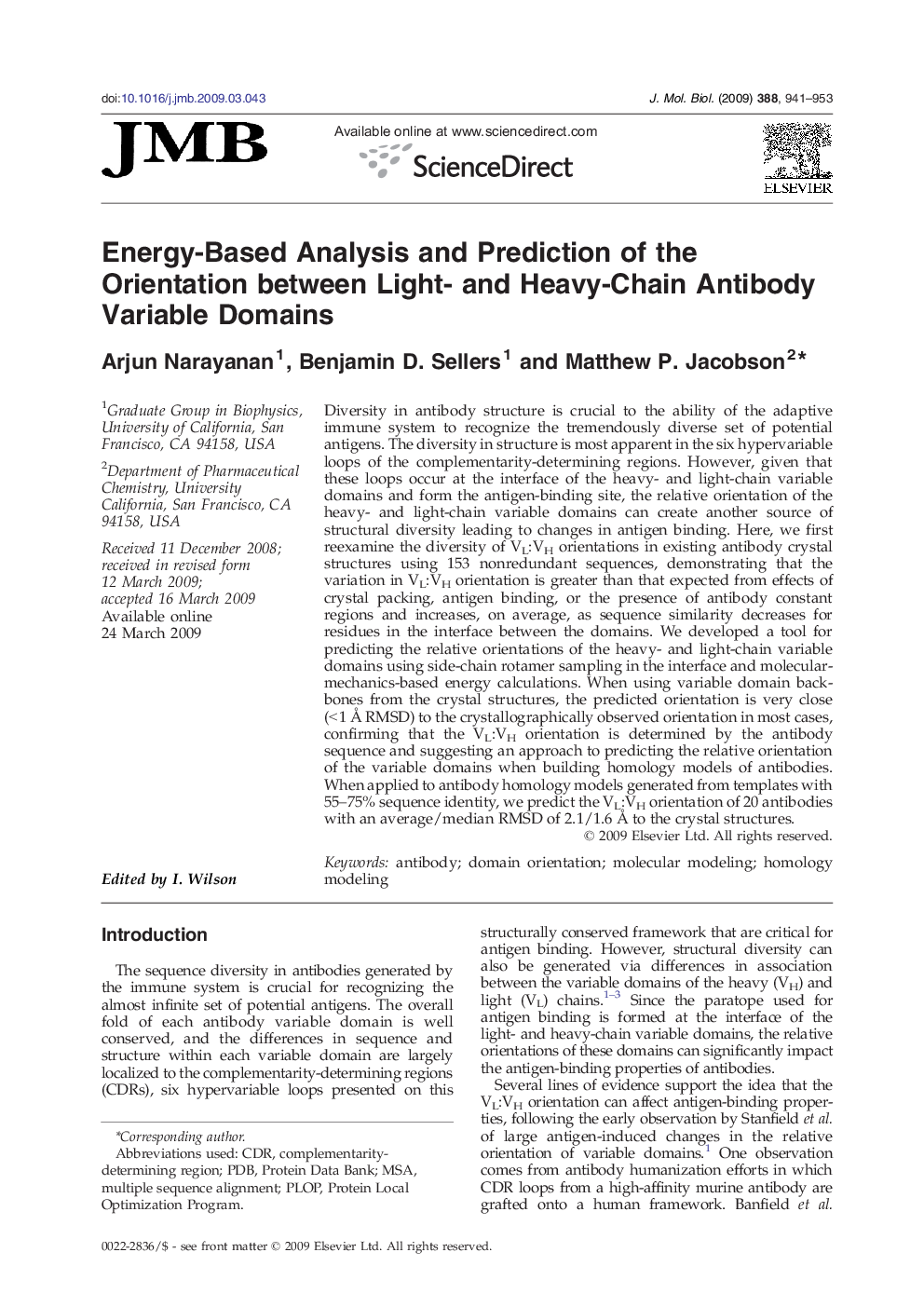| Article ID | Journal | Published Year | Pages | File Type |
|---|---|---|---|---|
| 2186458 | Journal of Molecular Biology | 2009 | 13 Pages |
Diversity in antibody structure is crucial to the ability of the adaptive immune system to recognize the tremendously diverse set of potential antigens. The diversity in structure is most apparent in the six hypervariable loops of the complementarity-determining regions. However, given that these loops occur at the interface of the heavy- and light-chain variable domains and form the antigen-binding site, the relative orientation of the heavy- and light-chain variable domains can create another source of structural diversity leading to changes in antigen binding. Here, we first reexamine the diversity of VL:VH orientations in existing antibody crystal structures using 153 nonredundant sequences, demonstrating that the variation in VL:VH orientation is greater than that expected from effects of crystal packing, antigen binding, or the presence of antibody constant regions and increases, on average, as sequence similarity decreases for residues in the interface between the domains. We developed a tool for predicting the relative orientations of the heavy- and light-chain variable domains using side-chain rotamer sampling in the interface and molecular-mechanics-based energy calculations. When using variable domain backbones from the crystal structures, the predicted orientation is very close (< 1 Å RMSD) to the crystallographically observed orientation in most cases, confirming that the VL:VH orientation is determined by the antibody sequence and suggesting an approach to predicting the relative orientation of the variable domains when building homology models of antibodies. When applied to antibody homology models generated from templates with 55–75% sequence identity, we predict the VL:VH orientation of 20 antibodies with an average/median RMSD of 2.1/1.6 Å to the crystal structures.
